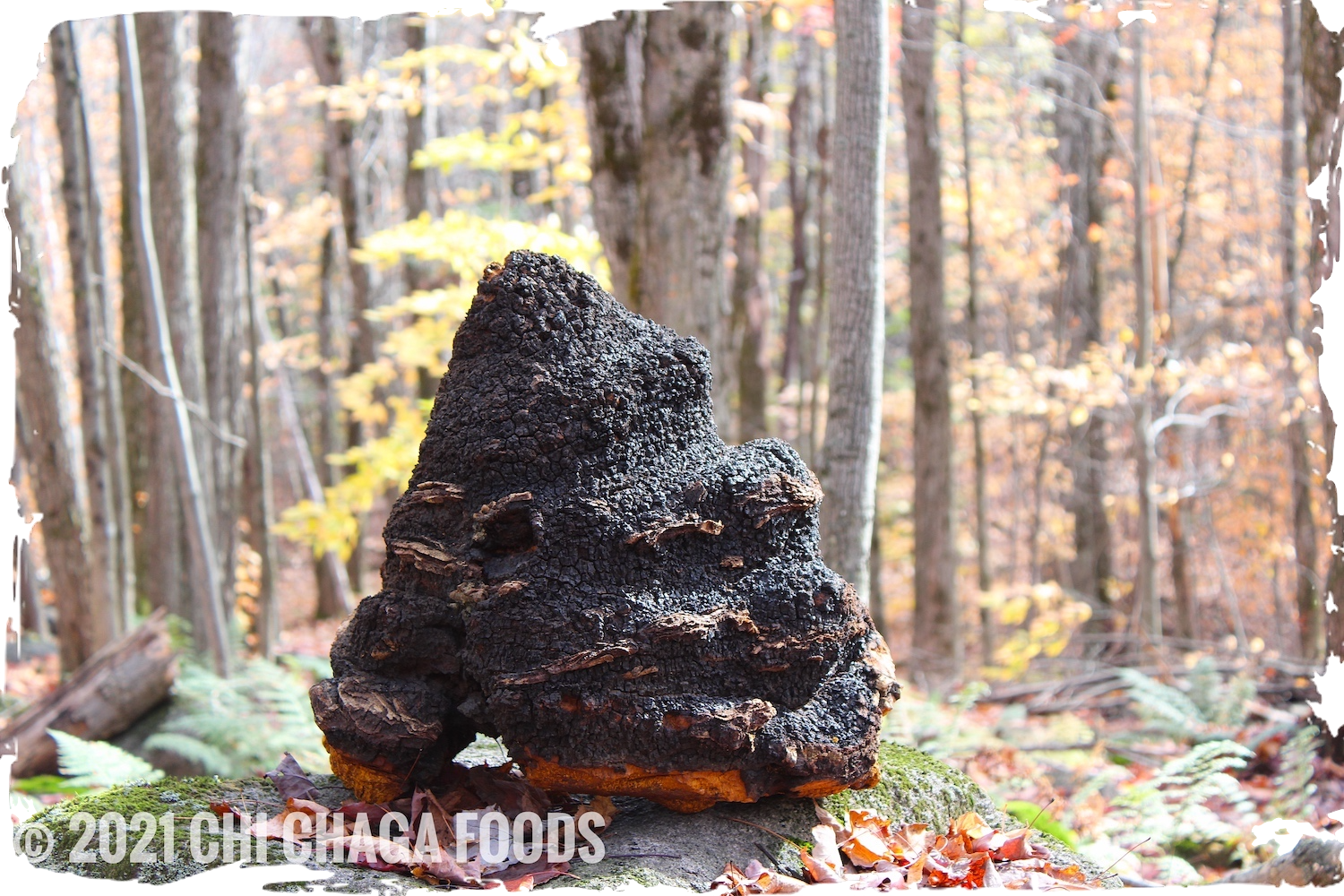Your Cart
Your Cart is currently empty.

The Chaga mushroom (Inonotus obliquus) is a type of slow growing, non-toxic fungus typically found growing on the trunk of birch trees in forests of Northern Europe, Asia and North America. Unknown to the western world where very few had even heard of this strange looking medicinal mushroom until writer Aleksandr Solzhenitsyn published in his 1968 semi-autobiographical novel, The Cancer Ward.
The novel is partly-autobiographical. Like Solzhenitsyn, Kostoglotov is a former solder and GULAG prisoner in hospital for cancer treatment from internal perpetual exile in Kazakhstann.
In a chapter called “The Root From Issyk-Kul,” Kostoglotov’s doctor discovers a vial of dark fluid in his bedside table, prompting Kostoglotov to explain the contents are an extract of a root used by natural healers in Russia to cure cancer. Solzhenitsyn ingested the same root extract before his cancer went into remission.
In the chapter entitled “The Cancer in the Birch Tree” Solzhenitsyn describes the character Oleg Kostoglotov, a political prisoner, having been released from a prison camp only to find he has developed cancer. Assigned to a clinic to receive high dose radiation, he tells his fellow patients that he wishes he could have been given a more simple “peasant’s” cure.
He could not imagine any greater joy than to go away into the woods for months on end, to break off this chaga, crumble it, boil it up on a campfire, drink it and get well like an animal.
~Aleksandr Solzhenitsyn, Cancer Ward (1968)
Born in 1887 Sergey Maslennikov was a Russian Doctor and physician-researcher who served at the Alexander sanitation center in Alexandrov.
Sergey was a man of many talents and compulsive researcher , compiled many recipes that are still consumed by the residents of the city for treatment of sore throat, colds . The main achievement of his life – a discovery of “symptomatic tool to facilitate the state of cancer patients”.
For decades – he treated in the same hospital. And then he noticed that although the medical literature was increasingly writing about cancer, he didn’t have cancer patients among the peasants. Why was this? …
He began to study … and found this phenomena: that to save money on tea, the men in this whole area do not brew tea, but chaga, also known as a birch mushroom. …
Isn’t it that chaga that Russian peasants have been treated with for cancer for centuries, without knowing it?
But obviously, this was not enough. He had to check everything and he had many, many years yet to observe those who drank this homemade tea and those who didn’t drink. This meant to give this drink to those who have a tumor, and take the responsibility not to treat them by other means.
Solzhenitsyn experienced the healing effect of fungus.as well as thousands of other people. Many of whom Sergey N. saved.
Born in 1887 Sergey Maslennikov was a Russian Doctor and physician-researcher who served at the Alexander sanitation center in Alexandrov.
Sergey was a man of many talents and compulsive researcher , compiled many recipes that are still consumed by the residents of the city for treatment of sore throat, colds . The main achievement of his life – a discovery of “symptomatic tool to facilitate the state of cancer patients”.
For decades – he treated in the same hospital. And then he noticed that although the medical literature was increasingly writing about cancer, he didn’t have cancer patients among the peasants. Why was this? …
He began to study … and found this phenomena: that to save money on tea, the men in this whole area do not brew tea, but chaga, also known as a birch mushroom. …
Isn’t it that chaga that Russian peasants have been treated with for cancer for centuries, without knowing it?
But obviously, this was not enough. He had to check everything and he had many, many years yet to observe those who drank this homemade tea and those who didn’t drink. This meant to give this drink to those who have a tumor, and take the responsibility not to treat them by other means.
Solzhenitsyn experienced the healing effect of fungus.as well as thousands of other people. Many of whom Sergey N. saved.
Chaga mushroom has an intense struggle for survival in freezing winter conditions and then hot conditions over summer.
But Chaga is rich in biologically active chemicals, arming it to face the environmental threats all around. Most significantly some of these chemicals are biologically active in humans. It concentrates natural compounds for its protection, and that is why it is so powerful to strengthen the tree, as well as heal, it makes potent phytochemicals, including:
Chaga contains wild-source minerals and is particularly high in:
Yet, its most potent ingredient is a special substance known as superoxide dismutase (SOD).
The most important components of the mushroom are derived from the bark of the tree on which it grows and chief among these are a substantial number of:
Researchers have inoculated sick trees with chaga to strengthen them..same people would benefit by consuming these forest-source phytochemicals and nutrients.
“Betulinic acid has been shown to induce mitochondrial apoptosis (cell death) in different cancer cell lines and inhibit the enzyme topoisomerase, which is essential for the unwinding and winding of the DNA strands in cell replication. Additionally it possesses anti-retroviral, anti-parasitic and anti-inflammatory properties.” Excerpt: Medicinal Mushrooms, A Clinical Guide by Martin Powell.

Chi Chaga Yerba Mate Tea is a Game-Changer Mornings can set the tone for the entire day, and at Chi
What great way to end 2024! We are thrilled to share that Chi Chaga has been recognized as a feature
Infuse your morning with the unique flavors of Chi Chaga’s 3 KINGS Regal Bloom blend, featuring Ch

